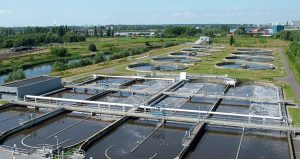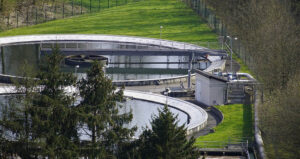Spanish wastewater treatment struggles with tourist boom

-
 Fergal MacErlean
Fergal MacErlean
Share article:
Urban wastewater treatment in Spain continues to be an intractable issue for the Iberian country which has a population of more than 48 million people in 2024. Besides that Spain has about 100 million international visitors who mainly flock to the coastal resorts, cities and towns. But most areas are severely lacking the necessary infrastructure to deal with such an influx.
In a 2021 report the Spanish government admitted that a ‘particularly worrying’ backlog has accumulated in the area of water sanitation and treatment. And, despite the fact that the number of urban agglomerations affected by European infringement proceedings has reduced from 970 in 2020 to 427 today, there are still two cases before European Court of Justice — opened in February this year — for poorly treated wastewater in small towns and for discharges in sensitive areas.
Environmental offenses
These two cases together with the rest of the EU’s legal proceedings for suspected environmental offenses means Spain has the unenviable position of topping the rankings in the European Union with 22 active green files, according to an EU database. In the ranking, Poland comes second with 20 cases, followed by Italy with 19, and Greece with 17 infractions. Last December the European Commission decided to refer Spain to the EU Court of Justice for its failure to fully comply with the collection and treatment obligations under the Urban Waste Water Treatment Directive (UWWTD).
Widespread wastewater failures
In a press statement, the European Commission said that it had identified ‘widespread failures to comply with the Directive in Spain’. The December 2023 statement added that ‘in the case of 29 agglomerations, Spain still needs to ensure that they benefit from wastewater collection systems and that, where the use of individual or other appropriate systems is justified, they achieve the same level of environmental protection of a collecting system’.
Upgrade of infrastructure needed
For 225 agglomerations, Spain is still failing to provide the entire agglomerations’ pollution load with the required treatment level and/or fails to meet the treatment performance for the discharges after treatment. This means that there are agglomerations where infrastructure needs to be built or improved. This may require substantial efforts in building out new physical infrastructure or upgrading already existing treatment facilities. Last year the Spanish government announced the largest investment ever in Spanish water management. The 23 billion euros are necessary to comply with various European water laws, like the Urban Wastewater Treatment Directive (UWWTD), the Drinking Water Directive (DWD) and the WFD.
Fines
Dumping urban wastewater into the sea or riverbed is a common practice in Spain, attracting millions of euros in fines. Since 2018 the country has paid 87 million euros in fines to the EU. By the end of this June, the bill for defective wastewater treatment will grow by another three million euros. Spain is obliged to pay this every six months for not having adequate treatment plants at a location in Tenerife and three in the southern province of Andalucía, including one in Barbate on the Atlantic coast. At this location, the discovery of a Roman-era salting site puts the new wastewater treatment plant in Barbate on hold for at least four months while archaeological surveys are underway. A previous report warned of the existence of possible archaeological sites in the area where the wastewater treatment plant is to be built.


















